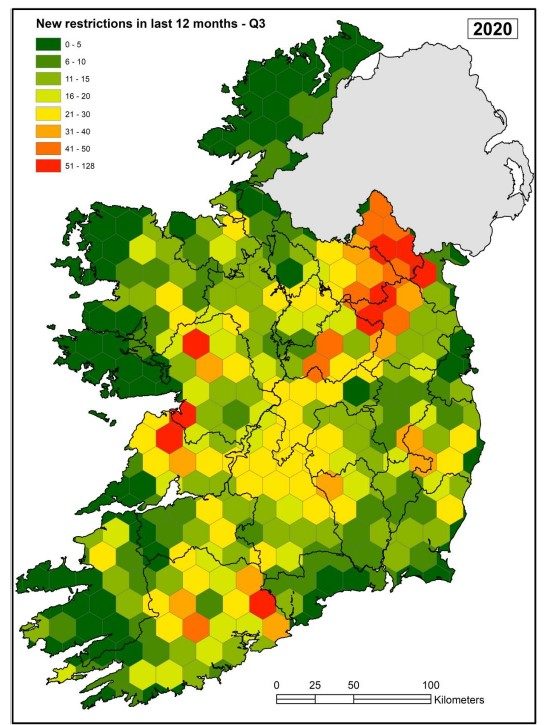The National Bovine TB (bTB) Statistics for the third quarter of 2020 show that TB trends continue to deteriorate as costs increase, according to the Department of Agriculture, Food and the Marine.
In the latest newsletter on the matter, it was highlighted that 2,813 herds are currently restricted in the country, with some 16,652 reactors detected.
This compares to 2,174 and 2,329 herds restricted in the third quarters of 2018 and 2019 respectively, as well as reactor numbers of 13,172 and 12,275 respectively.
From the end of September 2019 to the end of September 2020, 4,492 herds have been restricted.
In the same period the number of reactors identified through a combination of Skin Testing and Gamma Interferon Testing (GIF) was 21,289.
At the end of September 2020, national herd incidence was 4.25%, according to the department.
There are higher levels of bTB in the north east of Ireland (Monaghan, Cavan, Louth and north Meath) as well as parts of Clare, Cork, Galway and Wicklow.
A targeted High Impact bTB Control Plan has been in place in Monaghan and parts of Cavan, Meath, Louth, Westmeath, Offaly, Cork and Clare, the department added.
Continuing, the authority said that, while bTB disease is low relative to historical levels, TB herd incidence and reactor numbers have been gradually increasing since 2016.
The pace of deterioration has accelerated in 2020. Herd incidence is now at its highest level since 2012 and reactor numbers are now at 2009 rates.
Rising costs
In a breakdown of expenditure – including: compensation; On Farm Market Valuation (OFMV); valuer fees; vet fees; supplies; research; wildlife; and other costs – all categories saw a rise in 2020.
Of the categories, research saw the largest increase percentage-wise, increasing by 128%, though this, according to the department, was “due to timing factors”.
Supplies and OFMV also skyrocketed over the year, by 40% and 35% respectively.
In a table provided by the department, the overall expenditure level rose by 24% between last year and the end of September, with a 13% difference between 2020 and 2018.



